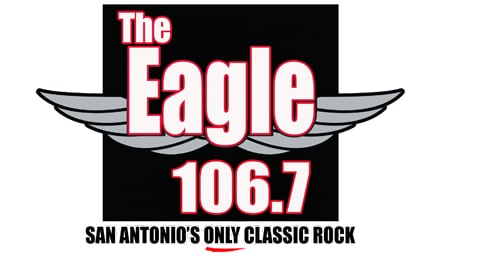How to pass a welding inspection: What inspectors are looking for
A welding test is a critical component of quality assurance. It ensures that welded joints meet structural integrity, performance, and safety requirements. Inspectors evaluate welds based on predefined criteria to detect defects that could compromise a product or structure.
A successful welding inspection depends on rigorous preparation, adherence to technical specifications, and thorough documentation. This guide from Meritus Gas Partners will help you pass a welding inspection by providing timely, relevant, and code-compliant support.
By following these steps, welding teams can demonstrate quality work, comply with applicable codes, and confidently pass inspections. This structured approach also supports traceability, quality assurance, and long-term welded component performance.
Understanding Welding Inspections in Manufacturing
Welding inspections verify that welds conform to design specifications, industry codes, and applicable standards. They help prevent failures in critical infrastructure, including pipelines, bridges, pressure vessels, and structural steel. Inspection can occur before, during, and after welding. This phased approach allows for real-time quality control and timely corrective actions. Types of welding inspections include:
Meritus Gas Partners
- Visual inspection (VT): VT is the most basic and widely used method. Inspectors check for surface defects such as cracks, undercuts, porosity, and misalignment. Visual inspection is often the first step in any quality control process.
- Radiographic testing (RT): RT uses gamma rays or X-rays to detect internal defects. This method provides a permanent weld image and can identify porosity, slag inclusions, and cracks. It is commonly used in pressure vessel and pipeline fabrication.
- Ultrasonic testing (UT): UT sends high-frequency sound waves into the weld and analyzes the echoes that return. This method is highly effective for identifying internal flaws and measuring weld thickness. It is suitable for thick materials and critical applications.
- Magnetic particle testing (MT): MT is used on ferromagnetic materials. Inspectors apply a magnetic field and then introduce fine iron particles. Surface and near-surface defects disrupt the magnetic field, attracting particles and indicating flaws.
- Liquid penetrant testing (PT): PT reveals surface-breaking defects. A colored or fluorescent dye penetrant is applied to the weld surface and then removed. A developer draws out the penetrant trapped in defects, making them visible.
- Destructive testing: In some cases, inspectors cut and physically test welded specimens to evaluate mechanical properties such as tensile strength, ductility, and impact resistance. Methods include bend testing, tensile testing, and macro etching.
Common Welding Codes and Standards
To pass a welding inspection, it’s essential to understand the welding codes and standards that govern the work being evaluated. Welding inspectors use these documents to assess whether a weld meets the required quality, safety, and performance criteria. The most commonly referenced codes and standards vary by industry and application, but they all serve as the technical foundation for inspection criteria.
American Welding Society (AWS)
AWS publishes widely used codes across structural, sheet metal, and pipe welding. These codes establish minimum requirements for weld quality, procedure qualification, welder performance, and inspection codes:
- AWS D1.1: The structural welding code for steel is one of the most frequently applied codes in the U.S. construction industry. It covers welding requirements for steel structures, including buildings, bridges, and towers.
- AWS D1.2: The structural welding code for aluminum governs welding practices for aluminum structures, addressing materials, qualification, and inspection.
- AWS D1.3: The structural welding code for sheet steel applies to thinner materials, such as light steel used in HVAC and framing applications.
- AWS D17.1: The fusion welding code for aerospace applications specifies the requirements for aerospace welding, where tight tolerances and high reliability are critical.
American Society of Mechanical Engineers (ASME)
ASME codes are predominantly used in pressure vessels, boilers, and piping applications. Section IX defines the rules for qualifying welding and brazing procedures and personnel. B31.1 provides design and fabrication rules for high-pressure and industrial piping systems. It references Section IX for welding qualifications.
American Petroleum Institute (API)
API codes are prevalent in the oil and gas industry. API 1104 covers pipeline and related component welding in cross-country and gathering systems. It includes detailed acceptance criteria for weld discontinuities.
International Standards
Outside the U.S., many industries use standards from ISO 9606, which references welder qualification testing to ISO 15614 for welding procedures specification and qualification. Another frequently referenced standard is EN 1011, which offers welding guidelines for metallic materials. These international standards may also be required for projects with global clients or regulatory requirements.
Key Criteria Inspectors Evaluate
Understanding and applying the correct welding codes is critical to passing inspection. Each code provides a clear framework for what constitutes an acceptable weld. Inspectors rely on these standards to assess workmanship, verify compliance, and ensure safety and reliability. Welders, engineers, and quality personnel should be trained and qualified to the applicable code to ensure project success and compliance. Inspectors evaluate welds based on specific acceptance criteria outlined in welding codes and standards.
Here is what inspectors look for in a weld:
- Visual inspection: Inspectors assess surface defects such as cracks, porosity, undercut, incomplete fusion, or overlap.
- Dimensional inspection: Weld size, length, and placement are assessed to ensure they meet the drawing and code requirements.
- Nondestructive testing (NDT): Techniques such as RT, UT, MT, and PT are used to detect internal or surface-breaking discontinuities.
- Procedure and personnel qualifications: The welding procedure specifications (WPS) and welder qualifications must be documented and comply with code requirements.
- Materials and traceability: The correct base materials, filler materials, and consumables must be used. Material certificates and heat numbers should be traceable.
The Role of Gases and Consumables in Welding Quality
Gases and consumables directly affect arc stability, metallurgical properties, penetrations, and the overall weld integrity. Understanding how they contribute to the welding process is critical to meet code requirements and ensure a successful inspection outcome.
Shielding Gases
Shielding gases protect the molten weld pool from atmospheric contamination. Oxygen, nitrogen, and hydrogen in the atmosphere can cause weld defects such as porosity, cracking, and oxidation. The type and composition of the shielding gas affect arc characteristics, weld penetration, bead shape, and mechanical properties. Common shielding gases are:
- Argon (Ar)
- Carbon dioxide (CO2)
- Argon and CO2 blends
- Helium (He)
- Oxygen (O2) or Hydrogen (H2) additions
Filler Metals
Filler metals provide the deposited metal in the weld. Their chemical composition must match or complement the base metal to ensure mechanical integrity and corrosion resistance. Filler materials are classified by standards such as AWS. They can include consumables such as stick electrodes (SMAW), solid wires (GMAW), flux-cored wires (FCAW), or tungsten electrodes (GTAW).
Fluxes and Slag Systems
In processes like SMAW, FCAW, and submerged arc welding (SAW), flux plays a vital role in shielding, alloying, and slag formation. Slag protects the weld pool and must be properly removed between passes.
Best Practices for Ensuring Weld Quality
Improper gas and consumable selection or handling can compromise structural integrity, leading to inspection failures or service defects. For high-quality, code-compliant welds, gases and consumables must be managed with precision, aligned with procedure requirements, and handled using best industry practices:
- Use the appropriate shielding gas and flow rate for the process and material.
- Select the right filler metal based on the base metal, welding position, and service conditions.
- Store consumables in dry, controlled environments and use ovens for low-hydrogen electrodes.
- Check the material certificates for batch traceability and compliance with WPS.
- Perform pre-weld checks to verify gas supply purity and consumable condition.
Preparing for a Welding Inspection: Step-By-Step Guide
Preparing for a welding inspection requires a methodical approach that ensures compliance with applicable codes, procedures and quality requirements. The steps below outline how to effectively prepare for a welding inspection by leaning into technical accuracy and inspection readiness.
Meritus Gas Partners
Step 1: Review Applicable Codes and Specifications
Before any welding starts, identify the governing welding code and project specifications. These documents define weld joint design, qualification requirements, acceptance criteria, and inspection methods. Verify that the current code condition is used, clarify project-specific amendments, and understand weld quality acceptance limits for discontinuities such as porosity, undercut, or incomplete fusion.
Step 2: Verify Welder and Procedure Qualifications
Ensure that WPS and welder performance qualifications (WPQs) are approved and up to date, matching welder qualifications to joint type, position, and material group. It is also imperative to maintain records of WPS, procedure qualification records (PQRs), and WPQ in a traceable format for reference during inspections.
Step 3: Check Materials and Consumables
All base metals, filler metals, and gases must conform to the approved WPS and relevant code requirements. It is essential to:
- Confirm that material test reports (MTRs) are available and traceable.
- Inspect filler metal certificates.
- Verify proper wire and electrode storage.
- Confirm shielding gas type and purity, and check for adequate gas supply.
Step 4: Confirm Joint Preparation and Fit-Up
Joints must be prepared according to the WPS and drawing requirements before welding. Measure joint dimensions, including the root opening, bevel angle, and land, using approved gauges. Ensure surfaces are clean and free from rust, oil, and other contaminants. Also, check the applicable backing bars, inserts or consumable backing.
Step 5: Verify Welding Equipment and Settings
Welding machines and equipment must be calibrated, maintained, and configured as required by the WPS. This includes confirming amperage, voltage, wire feed speed, and travel speed while checking polarity and shielding gas flow rate. Inspect contact tips, nozzles, and ground clamps for wear and damage.
Step 6: Perform In-Process Inspections
During welding, maintain quality control by monitoring parameters and workmanship:
- Use calibrated tools to verify interpass temperature and heat input.
- Monitor for arc length, travel angle, and welder technique.
- Remove slag between phases as needed.
- Conduct a visual inspection of each pass before proceeding.
Step 7: Conduct Post-Weld Cleaning and Inspection
After welding, prepare the weld for final inspection by removing slag and spatter. Clean the weld using wire brushing or grinding per code requirements. Check for cracks, overlap, porosity, undercut, and other surface defects. Measure the weld size, length, and location against the WPS and drawing, documenting all visual inspection results.
If the weld’s nature requires an NDT test, this may also be the right time. Provide the inspector with access to welds and remove surface contaminants as required. Then, review the NDT reports for compliance with acceptance criteria.
Common Reasons for Inspection Failure
The key to maintaining compliance, avoiding costly rework, and ensuring long-term performance stems from understanding why welding inspections fail:
- Weld defects or discontinuities that result from incorrect travel speed, heat input, improper technique, or contaminated base metals
- Unqualified welders or procedures, which are classified as procedural failure instead of a weld failure
- Inadequate joint preparation and fit-up from rushed or inconsistent fit-up practices
- Improper consumable handling, such as using expired low-hydrogen electrodes or substituting consumables without confirming compatibility
- Incomplete or missing documentation, including MTRs, PQRs, WPS and NDT results
- Failure in post-weld cleaning and inspection, which can conceal weld defects or cause discontinuities
Most inspection failures are preventable through proper planning, skilled labor, and strict adherence to procedure. Partnering with knowledgeable local distributors and technical experts significantly increases your chances of passing the welding inspection. It helps bridge the gap between code requirements and real-world applications, ensuring your welding operations meet quality standards the first time.
How Local Expertise Helps You Pass
Whether working on pressure vessels, structural steel, or pipelines, partnering with knowledgeable local distributors and technical experts can significantly improve the reliability and quality of welding operations. Distributors often maintain a local inventory of high-quality consumables and equipment, reducing lead times and supply chain disruptions. Local welding experts are familiar with the specific codes, standards, and regulatory requirements that apply in specific areas or industries, including:
- Local building codes or jurisdictional amendments to AWS, ASME, or API standards.
- State, municipal, or owner-specific inspection criteria.
- Common inspection practices used by regional certifying bodies or third-party inspectors.
For example, if a welding application calls for low-hydrogen electrodes like E7018, a local distributor can advise on correct storage, reconditioning, and handling practices that prevent moisture pickup and hydrogen-induced cracking — two common causes of inspection failures.
This story was produced by Meritus Gas Partners and reviewed and distributed by Stacker.









